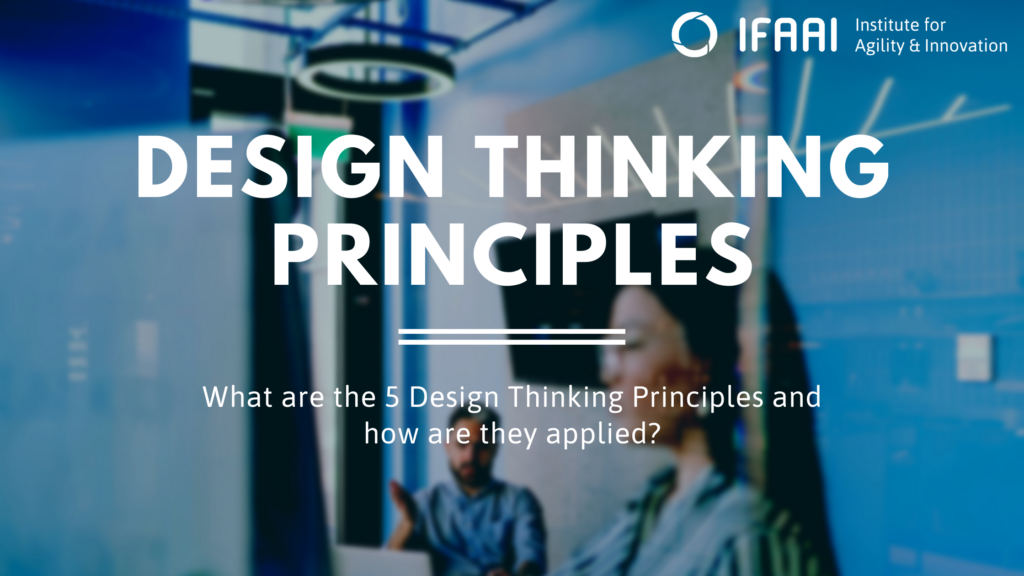Design Thinking
Design Thinking Principles
What are the design thinking principles?
In today’s world of consumer goods, the term design is often connected with a product’s appearance and quality. As a principle though, design thinking tries to better peoples’ lives and promote wellbeing.
But what exactly is design thinking and what are its principles? In the following we will have a closer look at this subject.
The design thinking principles
“Standing still is getting behind.” – Arie van Bennekum
Design thinking is the special way of thinking, which product designers use in their mind during every designing process. This instrument of thinking is able to drive entire brands and companies, people and businesses forward. Here experimentation and emphatical thinking are the key to innovative solutions.
The design thinking principle always starts with a problem. This problem needs to be tackled and solved, which is made possible by the ideas of a designer. Here is a simple example of this process looking at the invention of the smartphone:
- A need or a problem is discovered: How can we be able to contact anyone we want when- and wherever we want?
- The idea: We could use a telephone and make it mobile!
- The solution: A way to turn a phone into a mobile phone.
This entire process is based on five design thinking pillars: Empathize, define, ideate, prototype and test. In the following we will have a closer look at these design thinking principles.
What are the principles of design thinking?
Every process of design thinking goes through five stages.
- Empathize:
This first design thinking principle is to empathize. In this stage of a design process, the designer sits down with the future consumer of the new product and tries to understand their needs and desires. It is important for the listeners to understand the day by day pain points of the target audience. This is why the design thinking principle of empathizing is also called need-finding. In this stage we define a problem. - Define:
In the second pillar of design thinking we are going to work with the previously discovered problem. Here our perceptions are examined and integrated, so as to characterize and distinguish the center issue.To do this we need to organize all our previously acquired research. This can be done by using several different maps or frameworks, for example the experience map – the research gets organized around what the consumer does, feels and thinks.At the end of this design thinking principle we need to clearly define our perceptions. This is often done by creating a statement, containing these three points: user, need and insight. -
Ideate
In the third stage it is time to brainstorm. The entire team sits down and tries to come up with solutions with the previously defined problem. The main goal here is to think outside of the box and in an inventive and innovative way. During this design thinking principle stage the team comes up with ideas for a new product and a prototype.
-
PrototypeOnce the team has come up with a solution for the problem, it is time to create a prototype. There are several different ways to do this:
- Cardboard models
- Mockups of apps or other digital products
- Simulations
- Direct contact to consumers through Social media to get constructive feedback
The created prototypes can be put into two categories: concept and working prototypes. -
TestThe last of the five design thinking principles is the testing stage. The goal here is to put the prototypes to the test and see what works and what doesn’t. This stage can take a long time and many changes to the designers ideas often take place.A good way to see what works for the consumers is to create several prototypes, which online differ from each other in minimal ways. The users then have to figure out themselves how the product is supposed to be used. Observing this can give important information on consumers thoughts and be valuable feedback.
Design thinking principles – Applicable to more than just design
The design thinking principles can be applied not just to problems arising when creating a new consumer product. With any problem it is a good idea and helpful, to understand and define the human needs involved.
With IFAAI as Agile Certification Institute, you can become a certified Design Thinking Coach. Start your Design Thinking Exam now and show your skills to any employer worldwide. You can prepare for the exam by completing the Design Thinking Exam Simulation beforehand.
Any questions? Feel free to contact us, we will gladly help out where we can!


